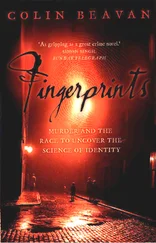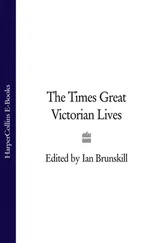Since he could not find the nightdress, Whicher returned to the moment at which it had vanished. He asked Sarah Cox, the maid, when she had sent it to be washed. The Monday after the murder, she told him, just before the inquest. At about ten o'clock on 2 July she had collected the family's dirty linen from their bedrooms. 'That of Miss Constance was generally thrown down either in the room or on the landing, some of it on Sunday, and some on Monday.' Constance's nightdress was on the landing, Cox remembered. It was not stained, she said, just lightly soiled as usual. 'It appeared to have been dirtied, as one would have been which had been worn nearly a week by Miss Constance.' Cox took the clothes to a lumber room on the first floor to sort out. Once she had done this, she asked Mary Ann and Elizabeth to enter the items in the laundry book while she packed them in the baskets for collection by Mrs Holley. She remembered packing three nightdresses - Mrs Kent's, Mary Ann's and Constance's - and she remembered Mary Ann noting them in the book. (Elizabeth wrapped her clothes in a separate bundle and listed them in a separate book.)
When Whicher questioned Cox more closely, she recalled that Constance had visited the lumber room while the laundry was being organised. The maid had already packed the clothes - 'I had it all in except the dusters' - and Mary Ann and Elizabeth had gone, leaving the laundry book. Constance 'stepped a step inside the room . . . She asked me if I would look in her slip pocket, and see if she had left her purse in it.' Cox searched the basket that contained the larger items until she found the slip. She pulled it out and checked the pocket. 'I told her the purse was not there. She then asked me if I would go down and get her a glass of water. I did so. She followed me to the top of the back stairs as I went out of the room. When I returned with the glass of water I found her where I had left her. I don't think I was gone a minute.' Constance drank the water, put the glass down and headed up to her room. Cox put the dusters in with the rest of the laundry and finished by laying a tablecloth over one basket, a dress belonging to Mrs Kent over the other.
At eleven o'clock, Cox and Elizabeth Gough set off to testify at the Red Lion, as the coroner had requested. Cox left the lumber room unlocked, she told Whicher, knowing that Mrs Holley would be arriving to collect the baskets within the hour.
Whicher put his mind to Cox's account. 'When I am deeply perplexed,' says the narrator of the fictional Diary of an Ex-Detective (1859), 'it is my practice to go to bed, and lie there till I have solved my doubts and perplexities. With my eyes closed, but wide awake, and nothing to disturb me, I can work out my problems.' From the start, a detective was imagined as a solitary thinker, who needed to withdraw from the sensory world to enter the free, fantastical world of his hypotheses. By piecing together the information he had gathered, Whicher compiled a story about the nightdress.
He reckoned that Constance asked Cox to look for the purse as a way of getting her to unpack the basket, so the girl could see where her nightdress had been placed. Then, when Cox was downstairs getting the water, Constance darted back into the room, snatched up her nightdress and hid it, perhaps beneath her skirts (the fashion for full skirts was at its peak in 1860*). Importantly, this was not the bloodied nightdress, which Whicher believed Constance had already destroyed, but a clean substitute that she had donned on Saturday. The reason for stealing it back from the basket was mathematical: if it seemed that an unstained nightdress had been lost by the laundress, the bloody one in which Constance had killed Saville would not be missed.
Whicher wrote:
I am of opinion that the night dress she wore when the murder was committed was afterwards burnt or concealed by her
, but still she would be apprehensive that the Police might ask her how many night dresses she had when she came from school
and to prepare for that contingency, she I believe, resorted to a very artful stratagem to make it appear that the one she was deficient of was lost by the washerwoman, the week after the murder, which I suspect she carried out in the following manner.
The family soiled linen was collected as usual the Monday (two days) after the murder and amongst it was a night dress belonging to Miss Constance, the one I assume she put on after the murder. After the linen was collected it was taken into a spare room on the first floor where it was counted by the House Maid and entered into the Washing Book by the elder sister. It was then placed in two clothes baskets by the Housemaid
but just before she quitted the room Miss Constance came in
and asked her to unpack the baskets . . . to see if she had left her purse in her slip pocket
. . . this I believe was part of her stratagem to ascertain
which basket her night dress was in
, as she immediately asked the Housemaid to go down stairs and fetch her a glass of water,
which she did, leaving her by the room door, where she found her on her return with the water
, and during this time I am of opinion she obtained possession of the night dress
which had then been entered in the washing book and took it again into use which at the end of the week when the washing came home she calculated it would be missed, and the Laundress blamed, and that would account for her
being one short if interrogated on that point.
To conceal the destruction of the evidence, Whicher believed, Constance engineered things so that an innocent nightdress was believed lost, by someone other than herself. Her sister and the housemaid would swear that the nightdress went in the basket; also that it was not bloodstained. She directed attention away from the stained nightdress, away from the house. It was a sidestep, a concealment of murder at one remove.
As Mr Bucket says in Bleak House, when struck by the cleverness of a murderer: 'It is a beautiful case - a beautiful case.' Then he corrects himself, remembering that he is addressing a respectable young lady. 'When I depict it as a beautiful case, you see, miss,' he goes on, 'I mean from my point of view.'
The detective's job was to reconstruct history from tiny indicators, clues, fossils. These traces were both pathways and remnants: trails back to the tangible event in the past - in this case a murder - and tiny scraps of that event, souvenirs. Like the natural historians and archaeologists of the mid-nineteenth century, Whicher tried to find a story to bind the fragments he had found. The nightdress was his missing link, an imagined object that made sense of his other discoveries, the equivalent of the skeleton that Charles Darwin needed in order to prove that men had evolved from apes.
Dickens compared the detectives to the astronomers Leverrier and Adams, who in 1846 simultaneously and separately discovered Neptune by observing deviations in the orbit of Uranus. These scientists, said Dickens, found a new planet as mysteriously as the detectives uncovered a new form of crime. In his book about Road Hill, Stapleton also likened astronomers to detectives. 'The detective instinct, brightened by genius,' he wrote, 'marked unerringly the place of that missing planet which no eye had seen, and whose only register was found in the calculations of astronomy.' Leverrier and Adams gathered their clues from observation, but they made their discovery by deduction, by guessing at the existence of one planet through its possible influence on another. It was a work of logic and imagination, like Darwin's theory of evolution and Whicher's theory about Constance's nightdress.
'To look at a star by glances, to view it in a sidelong way,' says Dupin in 'The Murders in the rue Morgue', 'is to behold the star distinctly.'
Читать дальше












